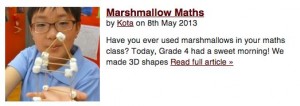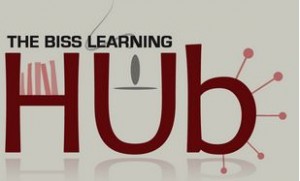Over the last 3 years, we have built a thriving culture of blogging in our elementary school. Each class (Pre-K to Grade 5) uses a blog as a hub of learning, literacy and reflection. Writing, photos and videos are added weekly, and often daily. In the upper years, students own individual learning blogs, to document the inquiry process. We are gradually training our parents to peek through these digital windows to see what their child learned this week!
Why?
When students blog, we know they feel motivated and confident to write. They consider the audience and focus on content, vocabulary and mechanics. Through this medium, they articulate questions, make connections, explain ideas and reflect on new understandings. In essence, blogging is a wonderful tool for strengthening writing and thinking skills.


Unexpected Benefits:
- More writing! We have found that modelled, shared & independent writing occurs more regularly in our classes. With an authentic purpose, it’s not a matter of “writing a recount”, but of sharing our experiences with the world.
- Reluctant writers drop their affective barriers. They still require scaffolding with syntax and planning, but tend to feel greater control over the process (of what, when and to whom they publish). As a result, reluctant writers demonstrate greater risk-taking and fluency in their writing.
- Our classrooms have become flat! Through blogging, we have connected with many classes and experts around the world. This has broadened our inquiries, led to fascinating Skype conversations and resulted in many teachable moments about digital citizenship.
- Writing genres are changing. We teach online commenting, with its own structural and grammatical features. We analyse posts and questions, to find out why some writing provokes discussion and elicits replies. Visual literacy is more relevant, as we create multi-media collages with text, image and video components. We consider contrast, repetition, alignment and balance to communicate effectively.
- More action! As a PYP school, we aim to foster and celebrate students’ self-initiated action. This has become much easier with a network of blogs. Is it the chicken or the egg? Are students taking action more regularly because they have a tool for reflection, which builds confidence, capacity and initiative? Or, were students already taking action, and now we have a window into their thoughts and deeds after the bells rings? Either way – it’s a joy to witness!
- We are letting go of control. To borrow Edna Sackson‘s phrase, we are “planning in response to student learning, rather than in advance”. Each morning, as the blog is projected on the screen, we allow last night’s comments to take us down the rabbit hole, driving the inquiry away from our lesson plans and in the direction of students’ questions & interests. In one environmental unit, this meant I cast aside neat plans for paper recycling, as students researched and debated the more complex impact of cattle grazing on deforestation (thanks to Uncle Gunter, who wrote from Munich, in German!).


Practical Tips for blogging with elementary students:
- Ask parents to sign a permission form, allowing student photographs, video and writing to be published online.
- Embed blogging in your writing program, focusing on structure, content and grammar.
- Utilise the blog as an assessment tool, to gain formative insight into students’ understanding, (which is evident through their comments/posts).
- Be an active citizen. Reciprocate! Comment on other class and student blogs. If you want an audience, be an audience.

In a culture of blogging, children believe that learning should be shared, students control the message and classrooms are connected to the world. What an exciting time to be an educator!



